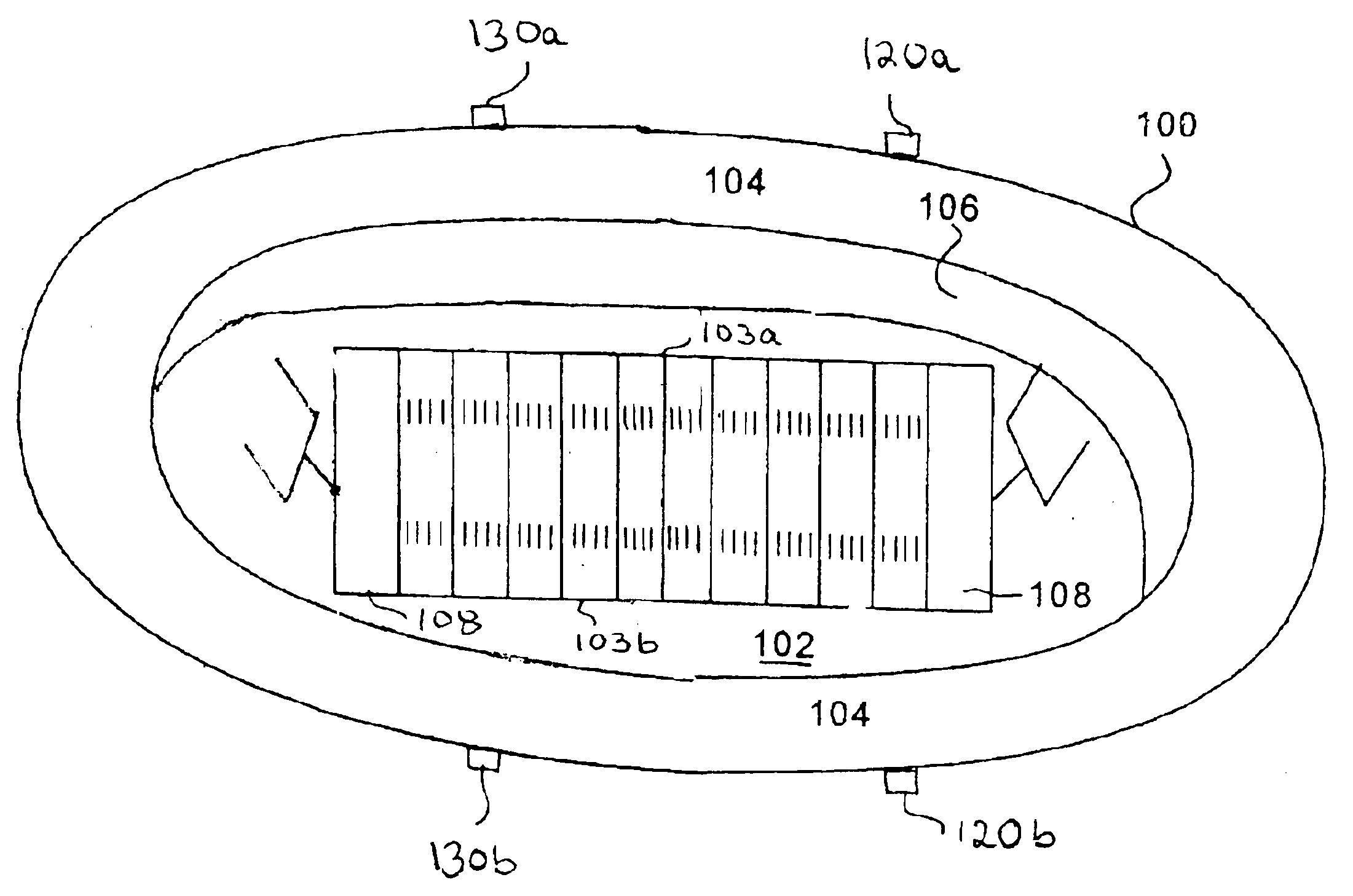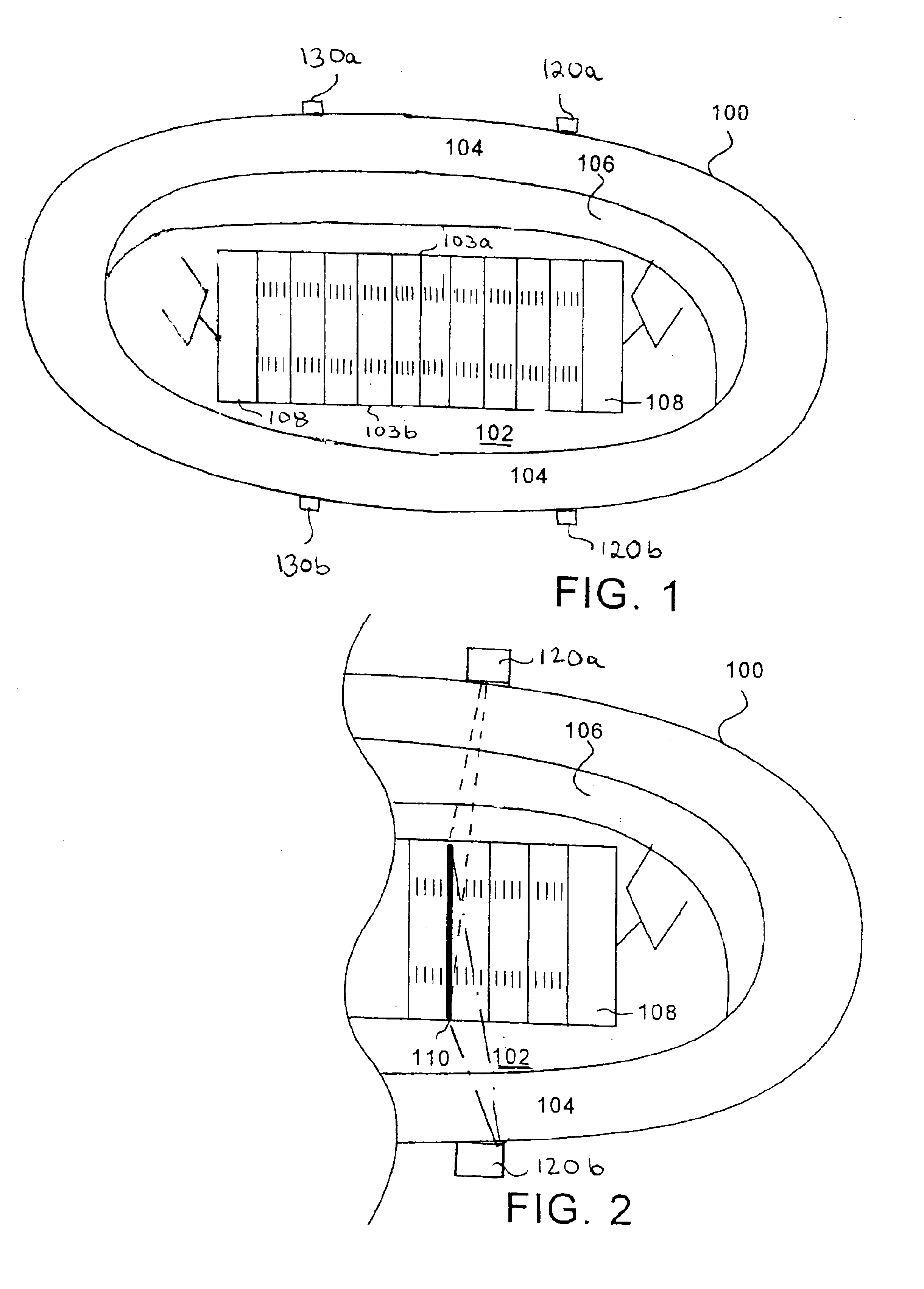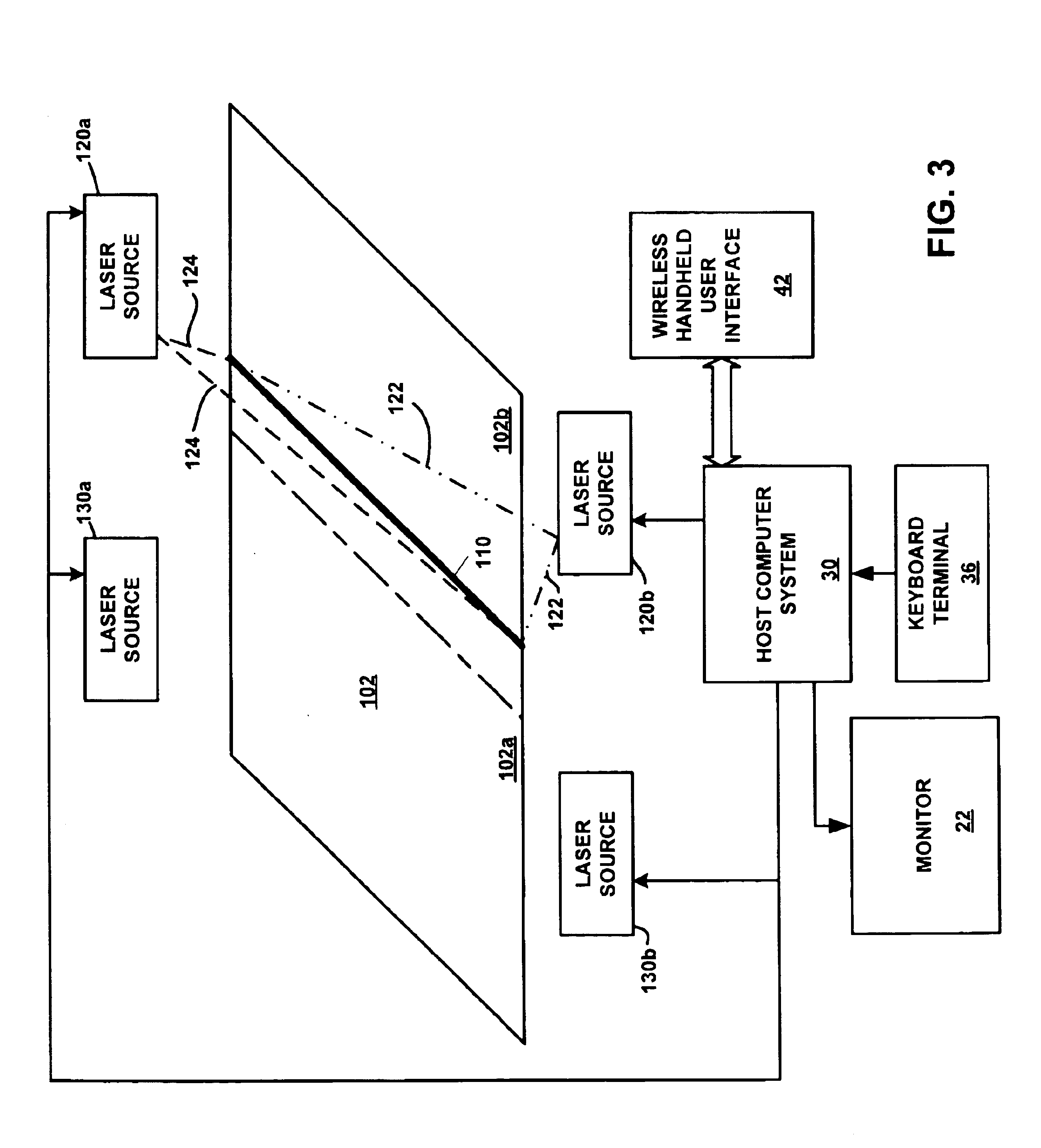System for operating one or more lasers to project a visible line onto a surface
a laser and surface technology, applied in the direction of instruments, movable markers, sport apparatus, etc., can solve the problem of substantial optical energy loss
- Summary
- Abstract
- Description
- Claims
- Application Information
AI Technical Summary
Benefits of technology
Problems solved by technology
Method used
Image
Examples
Embodiment Construction
[0030]In connection with the exemplary football stadium installation depicted in FIGS. 1 and 2, it will be understood that the term “target surface” refers to the surface of an athletic field that is entirely or substantially covered by real or artificial turf grass. By appropriate beam wavelength, output power level selection, and / or placement of multiple laser sources, the poor light scattering performance of such non-smooth surfaces can be overcome so that spectators can easily see the line(s) so-projected—from most, if not all, vantage points within the seating area of a stadium or arena—even in peak daylight ambient lighting conditions. It should thus be understood that although the exemplary embodiments illustrated and described herein relate specifically to the projection of a visible straight line onto the grass surface of a football field, the teachings of the present invention are equally applicable to the projection of other types of lines—including images, logos, adverti...
PUM
 Login to View More
Login to View More Abstract
Description
Claims
Application Information
 Login to View More
Login to View More - R&D
- Intellectual Property
- Life Sciences
- Materials
- Tech Scout
- Unparalleled Data Quality
- Higher Quality Content
- 60% Fewer Hallucinations
Browse by: Latest US Patents, China's latest patents, Technical Efficacy Thesaurus, Application Domain, Technology Topic, Popular Technical Reports.
© 2025 PatSnap. All rights reserved.Legal|Privacy policy|Modern Slavery Act Transparency Statement|Sitemap|About US| Contact US: help@patsnap.com



